The Leibniz-IZW is an internationally renowned German research institute. It is part of the Forschungsverbund Berlin e.V. and a member of the Leibniz Association. Our goal is to understand the adaptability of wildlife in the context of global change and to contribute to the enhancement of the survival of viable wildlife populations. For this purpose, we investigate the diversity of life histories, the mechanisms of evolutionary adaptations and their limits, including diseases, as well as the interrelations of wildlife with their environment and people. We use expertise from biology and veterinary medicine in an interdisciplinary approach to conduct fundamental and applied research – from the molecular to the landscape level – in close dialogue with the public and stakeholders. Additionally, we are committed to unique and high-quality services for the scientific community.
+++ Current information on African swine fever: The Leibniz-IZW conducts research on the population dynamics, on models of disease outbreaks in wild boars and on the ecology and human-wildlife interaction in urban areas. African swine fever is a reportable disease in domestic swine and therefor is the purview of the respective federal state laboratories and the Friedrich-Loeffler-Institut (Federal Research Institute for Animal Health) FLI. +++
News
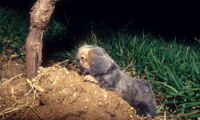
Genomic and epigenomic analyses reveal speciation in mole rat populations without sharp separation
For new species to evolve, conventional wisdom suggests that geographically isolated populations must exist that form separate reproductive communities. This isolation allows the genomes to slowly diverge and thus form new species. An international research team with participation of the Leibniz Institute for Zoo and Wildlife Research (Leibniz-IZW) and the University of Haifa has now reconstructed the first reported case of localspeciation within a common gene pool in subterranean mole rats, a group of species which are rodents. Four out of five mole rat species of the superspecies Spalax ehrenbergi originated due to climate divergence over the past 1.5 million years, regionally across the country, and locally in the Upper Galilee through geological and soil microscale adaptive divergence in the last 228,000 years without chromosomal divergence in a common region. The latter local mechanism is called "sympatric speciation" and has now been demonstrated for the first time in a subterranean mammal in the team's paper published in the “Proceedings of the National Academy of Sciences of the United States of America”.
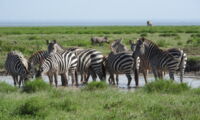
Water is a probable vector for mammalian virus transmission
Water is a necessity for all life but its availability can be limited. In geographical areas experiencing dry seasons, animals congregate near the few freshwater sources, often reaching large densities. At these sites many animals from different species come to the same spots to drink, potentially operating as key locations for pathogen transmission within and between species. An international team of scientists lead by the German Leibniz Institute for Zoo and Wildlife Research (Leibniz-IZW) suggests that viruses can use restricted freshwater sources as a vector to be spread among animals. The key prediction of this idea is that animal viruses remain stable and infectious in water. The team tested this idea by sampling water holes in ecosystems of Africa and Mongolia with pronounced dry seasons and growing viruses in such water. The scientific results demonstrated that this was indeed possible and are published in “Science of the Total Environment”.
Read more … Water is a probable vector for mammalian virus transmission
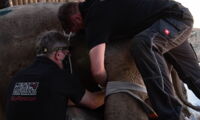
Covid-19 vs conservation – how the northern white rhino rescue programme overcame challenges posed by a global pandemic
The COVID-19 pandemic - caused by the novel coronavirus SARS-CoV-2 - has changed the life of people everywhere and affected economic, cultural, social and political processes. Research and conservation are not exempt from these negative effects, whereas positive consequences of an “anthropause” on the environment are controversially discussed. The BioRescue research project, a programme aiming at saving the northern white rhinoceros from extinction, exemplifies the challenges to overcome when conducting research and conservation in an international consortium in times of a global pandemic. COVID-19 hampered communication and travels, prevented or delayed crucial procedures, caused losses in revenues and by that may have lowered the chances of a survival of the northern white rhino. The consortium adjusted strategies, gained valuable knowledge during these challenging times and continued with its mission. The effects of the pandemic on the BioRescue project are described in detail in a scientific paper published in the “Journal of Applied Animal Ethics Research”.
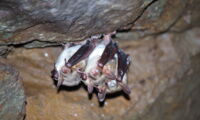
How European hibernating bats cope with white-nose syndrome which kills millions of North American bats
Fungal diseases are a major threat to wildlife, sometimes resulting in significant population declines or even causing the extirpation of populations or species. White-nose syndrome, caused by the cold-loving fungus Pseudogymnoascus destructans, has become a major cause of death for hibernating bats in North America. European bats survive when infected by the same fungus during hibernation. What are the reasons for such a contrast in outcomes? A scientist team led by the Leibniz Institute for Zoo and Wildlife Research (Leibniz-IZW) has now analysed the humoral innate immune defence of European greater mouse-eared bats to the fungus. In contrast to North American bats, European bats have sufficient baseline levels of key immune parameters and thus tolerate a certain level of infection throughout hibernation. The results are published in the journal "Developmental and Comparative Immunology".
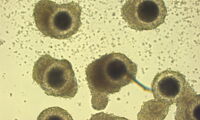
Scientists produce the first in-vitro embryos from vitrified African lion oocytes
A team of scientists from the Leibniz Institute for Zoo and Wildlife Research (Leibniz-IZW) inGermany, Givskud Zoo - Zootopia in Denmark and the University of Milan in Italy succeeded in producing the very first African lion in-vitro embryos after the vitrification of immature oocytes. For this specific method of cryopreservation, oocytes are collected directly after an animal is castrated or deceased and immediately frozen at -196°C in liquid nitrogen. This technique allows the storage of oocytes of valuable animals for an unlimited time, so that they can be used to produce offspring with the help of assisted reproduction techniques. The aim is to further improve and apply these methods to save highly endangered species such as the Asiatic lion from extinction. The current research on African lions as a model species is an important step in this direction. The results are reported in the scientific journal “Cryobiology”.
Read more … Scientists produce the first in-vitro embryos from vitrified African lion oocytes
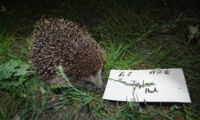
Recent hedgehog conservation research fills important research gaps on hedgehogs in the Anthropocene
Hedgehogs live both in the countryside and larger cities. As populations continue to decline, especially in rural areas, most hedgehogs in central Europe are now urban dwellers. To efficiently protect these populations, the suitability of their traits and life histories for life in human-dominated habitats need to be better understood. The new special issue on "applied hedgehog conservation research" of the scientific journal "Animals", co-edited by Dr Anne Berger of the Leibniz Institute for Zoo and Wildlife Research (Leibniz-IZW), fills an important part of this research gap. One of the new research results published in the special issue: Hedgehogs are not very mobile, yet despite considerable barriers in the cityscape, such as roads or waterways, they do not become isolated from each other and still function as one population. This was indicated by sufficient gene flow and a lack of genetic population structure of the hedgehogs in Berlin. The authors conclude that both green spaces and corridors in the city on the one hand and translocations by hedgehog carers on the other are key to the gene flow and thus to the resilience of local hedgehog populations.
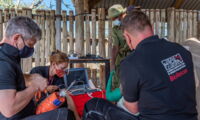
Happy end to a challenging year: Two new northern white rhino embryos created at Christmas – now there are five
The international consortium of scientists and conservationists that is working towards preventing the extinction of the northern white rhino through advanced assisted reproduction technologies is happy to announce that in December 2020, two new northern white rhino embryos were produced. On December 13, the team of Leibniz Institute for Zoo and Wildlife Research (Leibniz-IZW), Safari Park Dvůr Králové, Kenya Wildlife Service and Ol Pejeta Conservancy successfully performed an oocyte collection in Kenya. After immediate transportation of the recovered oocytes across continents, the embryos were created at Avantea laboratory in Cremona (Italy) following maturation and fertilisation of the oocytes with the semen of Suni. They were cryopreserved on Christmas eve when they reached the blastocyst stage suitable for freezing and increase the total number of viable embryos produced so far to five. This nourishes the hope that despite challenges and delays caused by COVID-19 the northern white rhino can still be saved. The next steps in the programme are already underway.
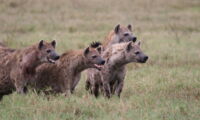
High-ranking male hyenas have better chances with females because they are less “stressed” than low-ranking males
Scientists from the Leibniz Institute for Zoo and Wildlife Research (Leibniz-IZW) have found that interacting with other males is more “stressful” for low-ranking than for high-ranking male spotted hyenas. This restricts the time and energy low-ranking males can invest in courting the most desirable females and is therefore a key factor for their lower reproductive success than their high-ranking rivals. This mechanism seems to be more important in determining the number and quality of offspring than physical traits such as attractiveness and fighting ability. These insights were possible owing to a combination of extensive field and lab work – over 20 years of searching and identifying thousands of hyenas in the Ngorongoro Crater in Northern Tanzania, monitoring their behaviour and life histories, and measuring the concentration of glucocorticoid metabolites in more than 400 faeces. The findings are published in the scientific journal “Functional Ecology”.




